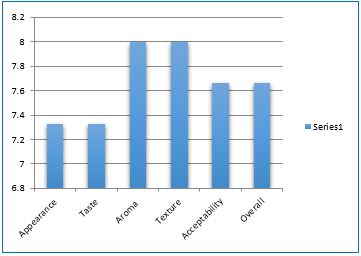Proximate Analysis and Organoleptic Properties of therapeutic Kadha tablet for Immunity Booster
DOI:
https://doi.org/10.21760/jaims.7.6.13Keywords:
Immunity, Covid-19, Organoleptic properties, Proximate analysis.Abstract
Kadha is a traditional drink with a variety of medicinal benefits. It has been utilized in India since ancient times, but the corona pandemic 2020 has brought it to the forefront. As we are all aware that prevention is preferable to treatment, improving the body's natural defense system (immunity) is crucial to maintaining good health. Ayurveda, as the science of life, promotes nature's gifts in sustaining health. The medicinal plants play a supplementary role in developing the immune system and fighting deadly viruses including COVID-19. The objective of this study is to evaluate the nutritional content through proximate analysis and organoleptic properties of Kadha tablet for immunity booster. Result showed that it has a good sensory property and nutritional content making it a good choice for consumer for achieving better immunity.
Downloads
References
Namdeo, P. (2021). A Review on Herbal Immunity Booster and Nutrition–To Fight against Covid-19. J Pharm Adv Res, 4(5), 1226-1237.
Subhrajyoti, C. (2020). Immunomodulatory herbs of Ayurveda and covid-19: a review article. Journal of Ayurveda and Integrated Medical Sciences, 5(02), 203-208.
Patil, A., & Kakde, M. (2020). Medicinal plant as a natural immunity booster for COVID19-A review. Indian Journal of Integrative Medicine, 24-27.
Pippali Benefite Precautions2019
Free guidebook to proximate analysis of food, Food navigator.com 2020
Yash D. Jagdale1, Sujata V. Ghodke2
Thiex, N. J., Anderson, S., Gildemeister, B., & Collaborators: Adcock W Boedigheimer J Bogren E Coffin R Conway K DeBaker A Frankenius E Gramse M Hogan P Knese T MacDonald JM ller J Royle R Russell M Shafiee F Shreve B Sieh J Spann M Töpler E Watts M. (2003). Crude fat, diethyl ether extraction, in feed, cereal grain, and forage (Randall/Soxtec/submersion method): collaborative study. Journal of AOAC International, 86(5), 888-898.
Okazaki, R. R., Sutton, A. J., Feely, R. A., Dickson, A. G., Alin, S. R., Sabine, C. L., ... & Virmani, J. I. (2017). Evaluation of marine pH sensors under controlled and natural conditions for the Wendy Schmidt Ocean Health XPRIZE. Limnology and Oceanography: Methods, 15(6), 586-600.
Galyean, M. (1989). Laboratory procedure in animal nutrition research. Department of Animal and Life Science. New Mexico State University, USA, 188.
Mishra, S., & Patel, M. (2020). Role of nutrition on immune system during COVID-19 pandemic. J Food Nutr Health 2020 3 (2). J Food Nutr Health 2020 Volume 3 Issue, 2.















